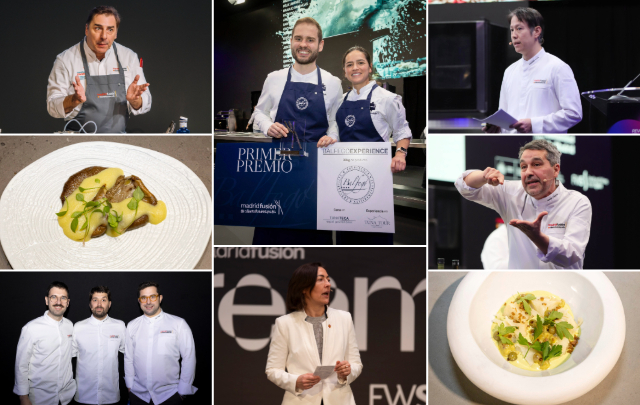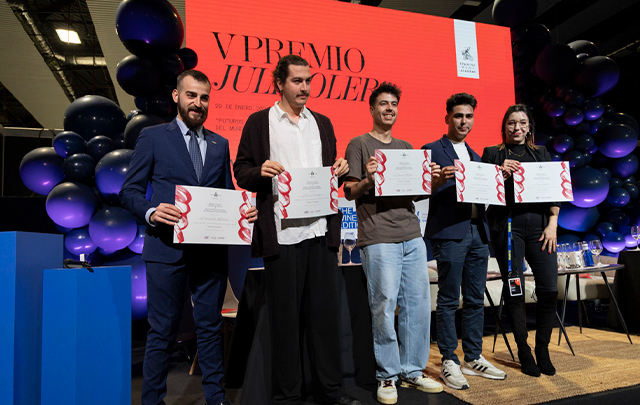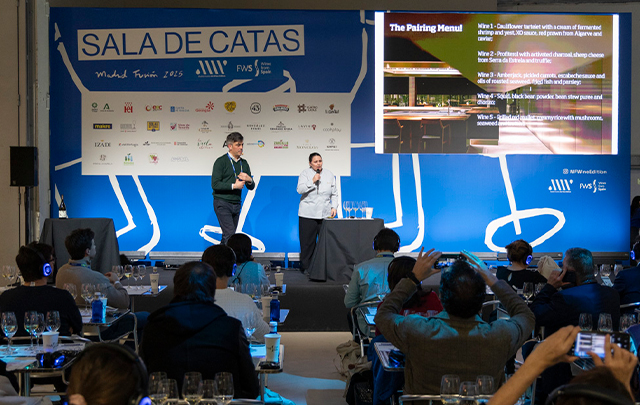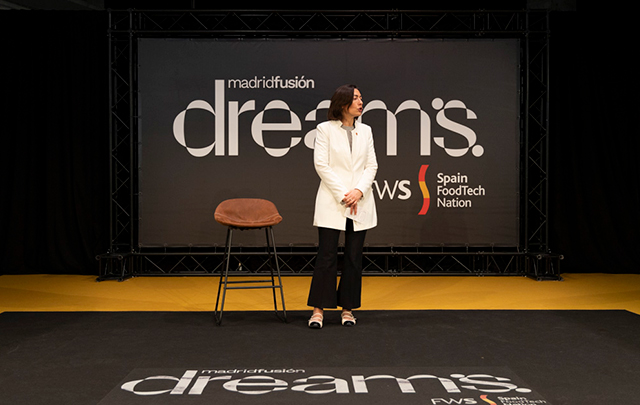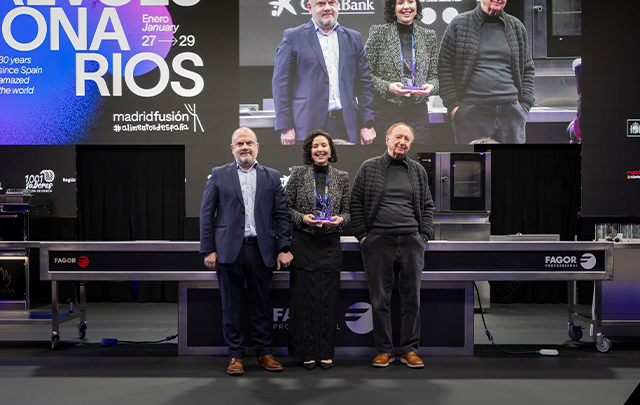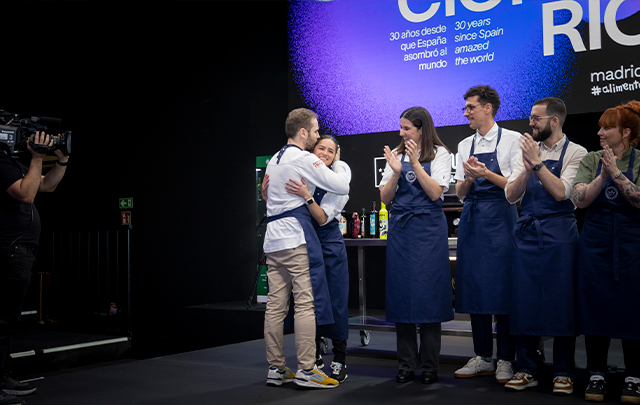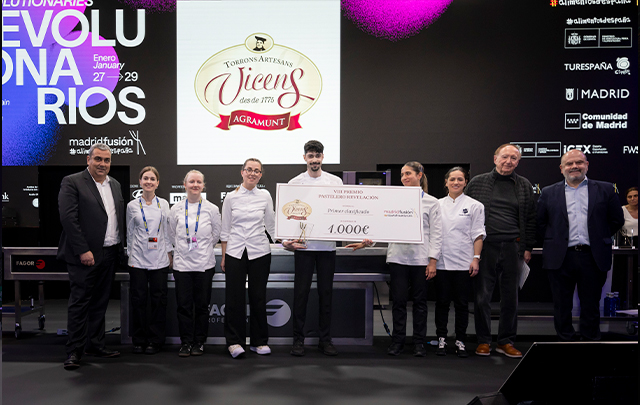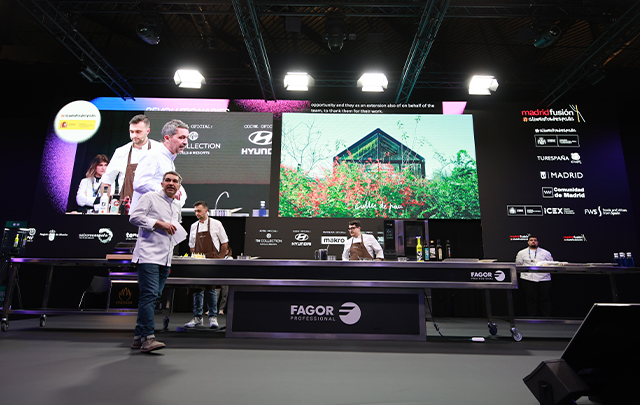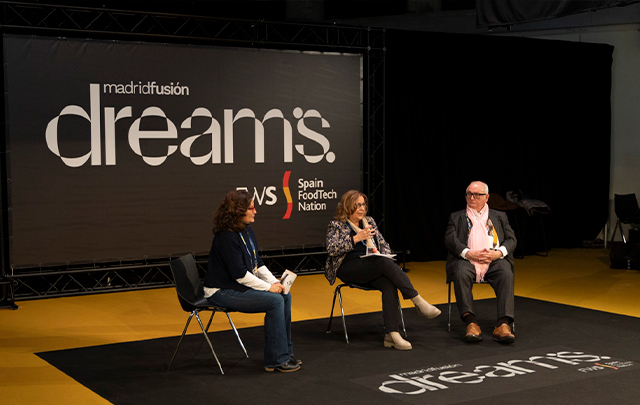News
The Thousand Flavors of Mexico in Jorge Vallejo's Recipe Book
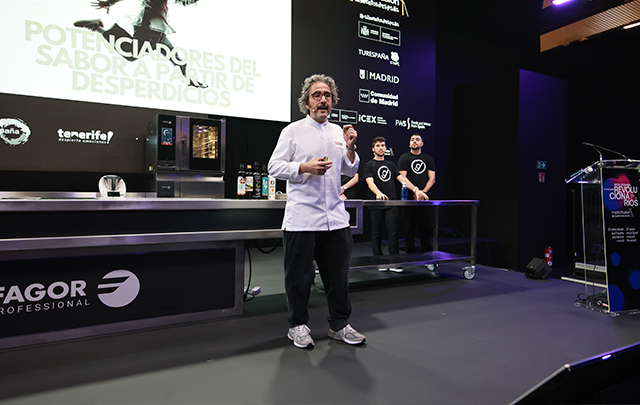
The chef of the restaurant Quintonil** (Mexico City, Mexico) and his team take us on a journey through the regional gastronomic culture of their country and its life in communities and habitats over several hundred years
Jorge Vallejo's cuisine tastes of Mexico, but "Mexico is not one, it is many," he clarifies. This is well known to those who enjoy his recipes at the restaurant Quintonil** (Mexico City, Mexico), where the regionalism of his country's gastronomic culture and its life in the communities can be savored. "Conviviality is an essential element in our cuisine, and we have an enormous variety because each region has a recipe, because we have almost all the ecosystems, seas, gulfs and a very diverse gastronomic heritage," confesses the Mexican chef of Madrid Fusión.
To discover all these Mexicos, Vallejo presented three dishes that show different ideas and a map of all the ideas that exist in his cuisine. We all think about death, but we all know the role it plays in the lives of Mexicans," said the chef as he presented a tamale, a dish that, although eaten throughout the year, "is a common dish throughout the country and has become an essential element in altars and offerings on the Day of the Dead," he explained. Presented in different forms and with a wide variety of flavors, it generally consists of a filling wrapped in dough inside a corn leaf and steamed. "Our proposal is with duck, which we bathe in a sauce and on top of which we add a Creole sauce made with peppers, tomatoes, coriander and a little chili, finished with a corn cream and ash powder.
If tamales are typical of Mexico, what can be said about tacos, "a dish that must be prepared at the table, because from the moment it leaves the kitchen until it reaches the table, it loses its charm and its flavor changes," explained Jorge Vallejo, explaining how a customer complained that he had to be the one to prepare his own taco at the table. "The customer is not always right," he said. If with the tamale he wanted to talk about the importance of death in Mexico and its cuisine, with the taco, which they called the Festival of Entomophagy, "we want to make the transition from death to the grotesque and to prejudices." "It's a friendly way to eat all kinds of insects, to explore their possibilities and their flavors through tacos," he explained. It consists of a collection of insects, ant eggs and larvae in the center of the table, waiting to be made into one or more tacos, because "eating tacos is an unforgettable experience". The insects are not served raw, but they retain their flavor and essence, and for this he prepared some escamoles (larvae of the güijera ant), with a sauce made of jumiles, another type of insect, nopal sauce, cucumber, chili peppers, chives and tiger's milk. "To all this we add some mushrooms with fermented broth with macha sauce of dried chili peppers and a guajaqueña sauce made with grasshoppers. It's finger-licking good," the chef confessed.
And Mexican cuisine is not complete without mole. "There are more than 50 types of mole in Mexico, although the truth is that there are as many moles as there are families and chefs," he explained. At Quintonil you can enjoy a sea mole, "the result of an evolution in me and in my restaurant that excites me a lot". It consists of a pipian of pumpkin seeds, with mussels and a sauce of viera, reduced with butter until it becomes almost a compote. It is accompanied by artichokes to give it a different texture and a chili liqueur. Everything is served on corn starch toast. “Pure taste, pure Mexico”
Flavor enhancers from "wasted food”
"The most expensive food is the one that is wasted". Diego Guerrero is well aware of this, having spent time studying and using different techniques to get to know products in their entirety, understanding their composition and functionality. The chef at DSTAgE** (Madrid, Spain) is able to give food a first, second and third life, even developing his own flavor enhancers that he implicitly applies to dishes or even makes them the protagonists of the dish.
All this work of getting to know the products is done in the Dspot workshop, where a biologist, a chemist and a chef work, "cooking, talking about science and studying food to create 50 new dishes," reveals Guerrero. On the walls of Dspot, "we explore, search and learn, seeking sustainability by relying on techniques, technology and tools, and with creativity as an association of ideas with different sources of inspiration," he adds.
"I have understood that the only thing that will not disappoint me is the product, but not understood as something luxurious, but as something that allows us to enjoy it to the fullest," says the DSTAgE chef. "For this you need knowledge, and having scientific experts at home is complex. If you want to play this game, you must take risks and not be afraid of losing. We don't look at what we want to win, we look at what we have to do," and in Diego Guerrero's kitchen they never stop. By making the most of food waste, "we have created a bank of flavors and a pantry that we want to have for a long time. They are the foundation of our way of cooking." They make the most of a clam, a shrimp, a loaf of bread from the day before or a brisket to create flavor enhancers that have their own personality and presence in the dishes. We have so much waste that we can use any of it to complete a recipe,".
Marketplace cuisine in the market
The project of Iago Pazos, chef at Abastos 2.0 (Santiago de Compostela), is basically a neighborhood project where the key is supply and where it is discovered that "market cuisine is made in the market". Abastos is a structure made up of several mini-businesses that come together to form a whole network that links the primary sector to the table, where the essential link and bond is the term K1L0M3TR4XE. A concept that they use to express, in a direct and conceptual way, the traceability of their dishes. Their menus always show the distance in kilometers between the origin of the food and the point of sale, as a way of highlighting and valuing the origin, the product and the people behind everything they serve.
"We were born 15 years ago making a clear type of cuisine where we made a menu every day and depending on what was in the market," he said. "We thought that was the norm," he said. Over the years, our way of looking at things has changed and now we do it in a more conscious, responsible and critical way because we continue to do the same thing but from a different perspective," he added. It has a 12-seat table where almost 60 people pass through every day and where "there is a simple cuisine with 2 or 3 ingredients per dish. A simple kitchen, because that is how we understand our cuisine," says the alma mater of Abastos 2.0. Ferran Adrià said you can't talk about product-based cuisine, but we want to explain to the customer where our products come from," Pazos explains.

